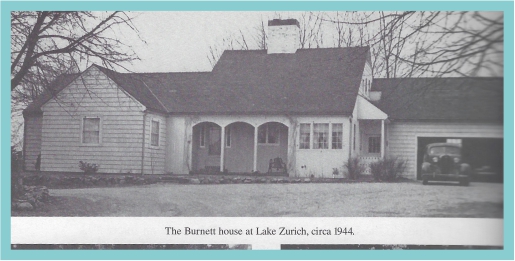
THE LAND PURCHASE
On Christmas Eve, 1940, Leo Burnett phoned his friend, John Olson, and said “John, I want to buy a farm for Naomi for Christmas. Do you think you can find one for me?” That started the search for a farm and house for Leo and his wife, Naomi. After eliminating 15 or 20 places, the Burnetts settled on 71 acres in Lake Zurich which they later added two additional parcels until the farm was about 130 acres. They purchased the original 71 acres on August 30, 1941. The farmhouse and the barn were 100 years old and dated back to the original setter, Dan Huntington. (With the later addition of the Kreuser property the total White Birch Lakes subdivision is approximately 180 acres.)




